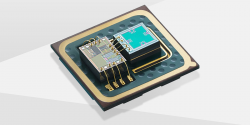Would 3D stacked 14nm chips be sufficiently competitive with the leading edge processes of 2022-23, or would it merely allow them to provide a midrange option?
Midrange.
Because the way it is being described makes it sound like 3D stacking will be capable of competing with the leading edge processes of the era, which seems unlikely to me.
Additionally is there a reason why other companies cannot design and fabricate 3D stacked 5nm chips and downwards for the 2023 era and onwards?
I imagine 3D stacked 5nm would be significantly superior to 3D stacked 14nm.
There are several kinds of chip stacking techniques. A lot of smartphones already stack together the CPU and NAND Flash into one package for example. People forget that the larger 14nm chips will have more power consumption per transistor. 14nm was barely adequate for the midrange a couple years back when Huawei fabbed some SoCs at SMIC, I don't know why people think it would be better next year or in two years when market leaders will have 4nm or 3nm.
Also, I think it is overly optimistic to think Huawei can make that fab work at high production rate in only 2-3 years. If they have to use a fully Chinese tool chain, that will also need to be validated and the tools will likely need to be optimized to work properly. It will require a lot of collaboration with the tool makers until it all runs smoothly. These reports about Huawei selling a license to their design to a Chinese state company which will then take care of farming out manufacturing by themselves only make me think the chance they will get their own production line operating has decreased, not the other way around.

